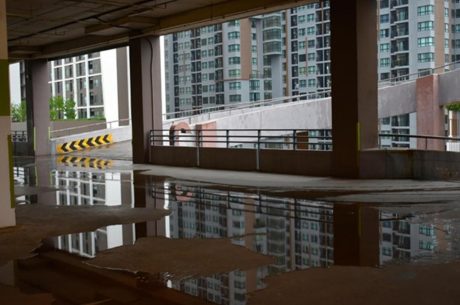A flooded basement can be a nightmare for any Michigan homeowner. Whether it’s due to heavy rainfall, a burst pipe, or poor drainage, standing water in your basement can lead to severe damage. Mold growth, structural issues, and ruined personal belongings are just a few of the problems you might face. Knowing how to handle this situation efficiently can save you a lot of stress and expense.
The first step in addressing a flooded basement is to assess the situation safely. You need to make sure the area is secure before starting any cleanup efforts. Once you confirm it’s safe, removing the standing water is the next critical task. This step is crucial to minimize damage and prevent mold from thriving in the damp environment.
After removing the water, drying out the area thoroughly is essential. Properly drying the basement helps to prevent long-term issues like mold and mildew. Finally, taking measures to prevent future flooding can protect your home from similar incidents. By following these best practices, you can tackle a flooded basement effectively and reduce the risk of it happening again.
Assess the Situation Safely
Before doing anything, make sure to assess the situation safely. First, turn off the electricity to the basement to avoid any risk of electrocution. Water and electricity are a dangerous mix, so this step is crucial. Use a flashlight to inspect the basement instead of turning on any lights.
Next, check for any structural damage. Floodwaters can weaken walls and floors, making them unsafe. If you see any signs of structural damage, such as cracks in the walls or floors, it’s best to wait for a professional to inspect the area. Look for any floating debris or sharp objects that could pose a hazard as well. Ensure you wear protective gear like waterproof boots and gloves to avoid any contact with contaminated water or sharp objects.
Finally, ensure that your personal belongings like furniture, electronics, and important documents have not been submerged in water. This initial assessment helps you understand the extent of the damage and plan the next steps accordingly.
Remove Standing Water
Once you’ve ensured it’s safe, the next step is to remove the standing water. You can use a variety of methods based on the severity of the flooding. For small amounts of water, towels and mops may suffice. For larger amounts, a wet/dry vacuum can be very effective. If the floodwater is several inches deep, consider renting a sump pump. This machine can help remove large quantities of water quickly and efficiently.
Place the pump or vacuum at the lowest point in the basement to make sure you get all the water out. Be sure to dispose of the water far away from your home to prevent it from flowing back into the basement. Repeat this process until you’ve removed as much water as possible. Removing standing water as soon as possible reduces the risk of severe damage and helps prevent mold growth, giving you a cleaner slate for the drying process.
Dry Out the Area Thoroughly
After removing the standing water, it’s crucial to dry out the area thoroughly. Start by opening windows and doors to allow for better air circulation. Using fans and dehumidifiers can also help speed up the drying process. Place fans around the basement to keep the air moving and direct them at wet areas. Dehumidifiers will help remove moisture from the air, which can prevent mold growth.
Remove any wet carpets, rugs, and furniture and take them outside to dry if possible. If the items are too damaged, it might be better to discard them. Make sure to check hidden areas like under furniture and behind walls where moisture may be trapped. Use moisture meters to ensure that the space is completely dry before considering any restoration work.
Check the walls for dampness and use a combination of fans and heaters to dry them thoroughly. Pay special attention to baseboards and other wooden structures that can retain moisture. Thorough drying keeps your basement safe from mold and mildew, which can cause health problems and structural damage.
Prevent Future Flooding
Preventing future flooding should be a priority once you’ve dried out your basement. Start by inspecting your home’s drainage system. Ensure that gutters and downspouts are clear of debris and direct water away from your foundation. If necessary, consider extending downspouts to keep water farther from your home.
Install a sump pump if you don’t already have one. Sump pumps help keep basements dry by pumping out water that collects in a sump basin. Make sure your sump pump has a backup power source in case of a power outage during a storm. Also, maintain it regularly to ensure it functions properly when needed.
Seal any cracks in your foundation and basement walls with waterproof sealant to prevent water from entering. Consider installing a French drain system around the perimeter of your basement to manage water flow. Taking these steps can significantly reduce the risk of future flooding and keep your basement dry and safe.
Conclusion
Handling a flooded basement in Michigan can be challenging, but following best practices can make the process more manageable. From assessing the situation safely and removing standing water to thoroughly drying the area and taking steps to prevent future flooding, each step is crucial. By addressing the problem efficiently, you can minimize damage and ensure your basement stays safe and dry.
If you need professional help, don’t hesitate. Contact PuroClean of Bloomfield Hills for expert flood restoration services. Let us help you protect your home and restore your peace of mind.




 PuroClean of Bloomfield Hills
PuroClean of Bloomfield Hills